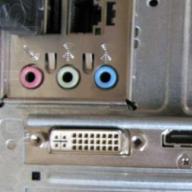The acoustic switch is a rather entertaining and interesting device that is very useful to assemble for a novice electronics engineer or radio amateur to improve their skills. Consider how to make an acoustic switch with your own hands from available radio elements.
The principle of operation of such a device is that a sound signal, usually a clap of hands, is perceived by a microphone, after which the load is connected or disconnected using various circuit solutions. Most often, the load is an incandescent lamp or LED lamp.
How the acoustic switch works
The operation algorithm of the simplest acoustic switch looks like this: when a clap is heard, the lamp turns on, with the next clap it goes out and so repeats all the time. Moreover, the light bulb can be in any state for an infinitely long time. We will put together a more advanced device.
The first algorithm for the operation of our acoustic switch functions as follows: one clap - one lamp is lit, the second - the second, the third - the third, the fourth - all the lamps go out. Then everything will be repeated again.
The second algorithm - everything happens in the reverse order: the first pop - three lamps turn on, the second - one goes out and two lamps remain lit, the third - one lamp remains lit, the fourth - all the lamps turn off. This option is well suited for a "night light", since with each pop, the light becomes dimmer and then goes out.
Acoustic switch circuit
There are many schemes of acoustic switches (AB): on transistors, logic chips, triggers, etc., but we will assemble our device on a microcontroller. Using a microcontroller, it is quite simple to implement algorithms of varying complexity with minimal alteration of the circuit or without alteration at all.
The first and essential element of any acoustic switch is the microphone. The microphone converts the audio frequency signal into alternating voltage. The simplest electret microphone is fine.
One pin connects the microphone to the minus, and the second, through the 510 kOhm trimmer resistor R1, to the plus. R1 adjusts the microphone sensitivity. Further, the alternating signal from the microphone output through the blocking capacitor C1, with a capacity of 1 μF, is fed to, made on one BC547 transistor. The emitter of the transistor is connected to a minus, and the collector is connected to a plus via a resistor R2 with a resistance of 1 kOhm. The amplifier is tuned using a 1 MΩ trimmer resistor R3.

Then the amplified signal is fed to the input. Depending on the number of pulses received, which corresponds to the number of claps, the microcontroller outputs a high or low potential to the corresponding outputs. In this circuit, we use three pins of the MK microcontroller, which work as an output. They power three similar circuits. Consider the operation of one circuit.
When at the MK pin there is a high potential (+5 V), the VT2 transistor of the 2N2222 series, connected to the MK resistor R4 (1 kOhm), opens and the relay coil K1 is powered. When relay K1 is triggered, its contacts are closed in the lamp power circuit and thus it is illuminated.
The coil of relay K1 should be shunted with a reverse diode VD1 to protect against overvoltage, since the coil has some inductance, and if the circuit is broken, a voltage surge may occur, although not significant in this case, but it is better to play it safe. Almost any diode with a current of at least 100 mA will do, you can use 1N4148.
Any relay can be used, but one should be guided by the following parameters: supply voltage 5 V, voltage of the closing contacts - alternating, 230 V. The current of the contacts is determined by the load of the circuit that will close and open the contacts. I have used the following relay type: HW32-005VDC-A. If you find a relay with a coil supply current of no more than 20 mA, then you can do without a transistor switch.
The power supply of the acoustic switch circuit is carried out from a stabilized power supply with a voltage of 5 V. You can take any ready-made power supply unit or assemble it yourself, as described in.
Setting the acoustic switch
The device is configured using two variable resistors. I achieved such sensitivity that the switch did not respond to music, speech and light blows from the door, but at the same time it worked perfectly for a slam from the opposite end of the room. Please note that the microphone must be positioned in the direction of the pop.
You probably wondered why cotton? The fact is that the amplitude of the sound wave caused by a clap is much greater than during normal conversation or music, so the amplifier can be configured in such a way as to filter out other sound sources, thereby eliminating false triggering of the device.
Now, I hope you are convinced that making an acoustic switch with your own hands is quite simple. I assembled this device on a breadboard, but if we use SMD components and solid-state relays, then the dimensions of the acoustic switch will not exceed a matchbox. Happy assembly everyone!
Download
An acoustic switch is a very useful household item. Such a device will add comfort and creativity to your home. With it, you can turn on and off the light, or use it for other devices, such as an electric kettle or a fan.
Such a switch will find application in a situation where a person needs light, but is limited in capabilities. It will be enough to clap your hands and the lighting will turn on. They are also called cotton sensors.

The principle of operation of acoustic switches is to use a microphone with adjustable sensitivity. The microphone turns on or off when sound is detected.

Disadvantages of acoustic sensors
The disadvantages of these sensors stem directly from what they respond to - sound. Microphone selectivity is very high and the development of acoustic light switches progresses, so that modern sensors very accurately respond to a given sound. But in order to produce this sound, you need to know which one, and this sound will always be a signal on or off.

The second significant drawback is the sensitivity zone. For a room with a large size, you will have to clap loudly enough, or come closer.

And if you increase the sensitivity, the sensor can react to similar signals from an adjacent room.






The simplest circuit of an acoustic switch
The simplest effective circuit of an acoustic switch can be assembled by anyone with a desire and time. Such a switch can be used for various purposes, for example, to turn on and off the lighting in a room using a cotton, the same principle of operation and control of any equipment. In general, this acoustic switch is a very useful thing in household use.
This sensor makes it possible with a clap to turn on and off the power circuits. Such a device can be used to turn on a light.

It is quite sensitive, due to the presence of a double amplifier on low-power transistors. Responds well to cotton from a distance of five meters from the microphone.

Required parts for assembly
To assemble an acoustic switch with your own hands, you need to take the following parts:
- Resistors (R1-10k, R2-1M, R3-22k, R4-270k, R5-2k, R6-1.8k, R7-330 Ohm, R8-1.5k)
- Transistors (VT1-KT315, VT2-KT315, VT3-3107)
- Capacitors (C1-3200pf, S2-1mkF × 10v)
- Diodes VD1
- Miscellaneous: M1 - electret microphone, HL1 - LED or relay, terminal block.

Acoustic switch device
The microphone amplifier is assembled on two bipolar transistors of the KT 315 series. In order to increase the sensitivity of the microphone, you can use transistors of the KT 368 type or their imported counterparts (SS 9018).

The power part of the circuit is a powerful transistor KT 818, which controls the load. If you want to control a large load, you can use a relay with a supply voltage of 3.5 to 15 volts.

When managing loads with power up to 12 volts, the relay can be removed from the circuit and the load can be connected instead. If you need to control loads with mains power, then you definitely need a relay. During the clap, the microphone receives the wave and feeds it to the power amplifier, they take turns amplifying the signal received from the microphone.

The already amplified signal goes to the base of the key, its value allows the transistor to work, and at this moment the transition of the transistor opens and conducts current. It powers the connected load or relay. When the pop is repeated, the generation is cut off and the relay is de-energized.






Instructions for making an acoustic switch
First you need to make a printed circuit board. The PCB has special holes for the VD1 diode. A diode is needed to protect the VT3 transistor from the EMF of the relay coil. If you want to connect a light load to the switch, you can replace it with a jumper.

After making the board, you need to drill holes and plow it. Next, open the seal in the sprint-layout 6.0 program and according to the location of the parts and solder them into place.

Note! 
Looking at the photo of the finished acoustic switch, we see a compact sensor that is easy to install. It is a small board with soldered parts.

During assembly, it is necessary to comply with all ratings of the parts, even a slight slope can lead to malfunction of the switch. The device responds not only to pops, but also to any low-frequency noise.

Power is supplied from a DC source with a voltage of 5 to 12 volts. Necessarily from stabilized sources of constant voltage; when using switching power supplies, the device may not work.






In order to make an acoustic switch with your own hands, parts are needed, they can be purchased at any radio store, they are affordable and inexpensive.

You can use parts soldered from old boards. The circuit is very simple, and even people who are little familiar with radio electronics, using this circuit, will be able to assemble this device.

Photo of the acoustic switch

Note! 










Note! 















Recently, LED lamps and various toys have become very popular, in which the principle of "clap switch" operates. In our article, we will assemble something similar, but instead of a lamp, we will use a 3 Volt LED.
Here is the diagram itself (for a more detailed display, click):
If you put a relay coil instead of the HL1 LED, then even incandescent bulbs can be ignited, while VD1 appears in the circuit, which will protect the VT3 transistor from self-induction in the relay coil when it is turned off. If you make a circuit with an LED, then this diode is not needed.
It will look something like this:
So, the most important details of the circuit are:
Two KT315G. Can be used with any other letter. The pinout (pinout) and labeling of these transistors can be found in this article.
We will also use the 3107B transistor in this circuit.
And here is its pinout:

where K is the collector, B is the base, E is the emitter.
And of course, the most important part of our circuit is the microphone.
Attention here! Microphones are different. I don't think we will list the classification of microphones. I will say one thing, now the so-called electret microphones:

The picture shows the EM-6050 electret microphone, which is used in my circuit.
What is the joke? The thing is that they have, roughly speaking, there is polarity... One of the microphone leads is attached to the microphone body. This can be easily seen from the printed wires that connect one of the microphone pins to the housing. You can also ring out by attaching one probe to the microphone body and the other to the microphone terminal.
In our circuit, the microphone output that rings on the body is connected to the minus of the power supply, and the other output, respectively, to the plus.
My circuit works fine with a supply voltage of 5-9 Volts, which can be seen in the video below:
A couple of weeks ago, an LED panel for room lighting was assembled and it was decided to assemble an acoustic switch for it, and today I want to consider perhaps the simplest circuit of an acoustic switch.
The scheme was found on one of the bourgeois sites and slightly altered. The device allows you to turn on and off the power circuit with a clap. I intend to use it to turn on the lights. The device is quite sensitive thanks to a double amplifier on low-power transistors. Reacts to cotton at a distance of 5 meters from the microphone. All parts were replaced with domestic ones.

The microphone amplifier uses domestic transistors of the kt 315 series with any letter or index. In the final stage, a powerful transistor switch on a bipolar transistor of the kt 818 series is used, all other details are as in the original circuit. You can exclude the relay from the circuit and connect the load in its place, but this is only in those cases when you need to control loads with a power supply of up to 12 volts, if you need to control loads powered from the network, you cannot do without a relay. At the moment of clapping, the microphone receives the wave, and as a signal is fed to the power amplifier, which alternately amplify the signal received from the microphone. The amplified signal goes to the base of the key, its value is sufficient for the transistor to operate, and at this moment the transition of the transistor opens and conducts a current that feeds the connected load or relay.

When assembling, observe all ratings of parts, even a slight slope can lead to abnormal operation of the switch. The device reacts not only to pops, but also to low-frequency noises (powerful bass, etc.).


The supply voltage range is from 4 to 16 volts, power only from stabilized DC voltage sources and under no circumstances use switching power supplies, the device will not work with them!

For the trial version, the device was mounted on the wall, then it will be transferred to the board, the main thing is that everything works without failures.
Nowadays, remote lighting control is becoming popular. To do this, you can use a sound or cotton switch. If the sound is strong enough, equal in strength to the clap of your hands, the light turns on or off. If earlier such electrical circuits were assembled by radio amateurs, now the device can be bought in many electrical stores.
Cotton Switch Model
Connection diagrams
The simplest do-it-yourself device works from a microphone, with a signal amplification several times. One of these schemes is shown in the figure below. All components are readily available.

Operation diagram of the cotton switch
The amplifier consists of two transistors (KT315). The signal from the microphone (M) passes through them, amplifies and goes to the base of a powerful transistor (KT 818). It controls the relay (Rel1), which makes or breaks its contact in the lamp supply circuit or other load: air conditioner, fan, etc. The sensitivity of the device is 4-5 m, which is enough for domestic premises. The sound, supplied periodically, alternately provides connection and disconnection of the load from the network.
The circuit is one of the simplest, especially since the microphone can be taken from an old tape recorder or telephone. An electret microphone is common. One terminal is connected to the body (minus). It is not difficult to call and find it. The power consumption of the device is negligible, and the supplied voltage is 3.5-16 V.
Instead of a relay, you can connect a low-power LED lamp, which will be the main load. Then there will be no mechanical parts in the circuit, and its reliability will increase. The lamp is quite suitable for a night light, lighting a household room, as well as a room where it is difficult to navigate at night, and the main switch is difficult to find.
The circuit breaker shown is too simple. You can assemble a more perfect and reliable device on trinistors with your own hands.

Wiring diagram of the cotton switch on SCRs
The basis is a trigger from SCRs (V2), (V3) and a transistor switch (V4). The trigger is connected to a voltage divider from a microphone (B1) and a resistor (R8). The key controls the lamp (H1). The trigger is powered through a diode (V9) and resistors (R9), (R10). The voltage is equalized using a capacitor (C7) and a zener diode (V1).
The steady state of the trigger will be when one of the SCRs is on and the other is off. When a sound signal from the microphone is applied, a pulse appears on the voltage divider, which transfers the trigger to another state. In this case, the lamp will either turn on or off.
The load power of the circuit breaker is about 100 W. If it needs to be increased, the diodes (V5-V8) of the bridge circuit are taken more powerful, and the SCRs are installed on the radiators.
Staircase lighting
For interfloor lighting, it is advisable to use an acoustic sensor with a photo relay.

Circuit of a switch combined with a photosensor
The photodiode (VD1) forms a voltage divider with a resistor (R2), which forms a voltage divider with it and allows you to adjust the sensitivity of the sensor. If the photosensor is not needed, turn it off by setting the resistor (R2) to minimum.
The circuit is based on the K176LA7 microcircuit, the elements of which are D1.1-D1.4. D1.1 and D1.2, they are designed to eliminate the bounce of the light switch at threshold illumination values.
The audio signal is picked up by an electret microphone and converted into an electrical one. Then it is amplified by bipolar transistors and fed to logic elements (D1.3) and (D1.4), which generate a pulse with a duration of about 10 seconds. During this time, the lighting lamp (La1) remains on. In the daytime, the lamp is switched off by a control signal coming from the output (4) of the element (D1.2).
Automatic soft switch
The switch is used to smoothly turn on the light from an analog microphone signal for a specified time.

Scheme of operation of a smooth acoustic switch
The sound enters the microphone, converted into an electrical signal and amplified, passing through the operational amplifier (DA1.1), charges the capacitor (C6). When the charge becomes greater than that on the capacitance (C7), the comparator (DA1.2) switches, and a logical unit signal appears at its output instead of zero. As a result, the generator on the transistor (VT1) is started, it supplies pulses that open the triac (VS1), through which the lamp is powered (EL1).
After a certain time, the voltage across the capacitor will decrease. As it decreases, control pulses with an increasing phase delay arrive at the triac, causing the lamp to turn off smoothly.
Having selected the ratings (C6) and (R5), you can turn on the lamp for up to 3 minutes.
Manufacturers
Cotton switch "Ecosvet"
Reducing the price of electronics makes it impractical to manufacture acoustic light switches with your own hands. The Ecosvet switch works with all types of 220 V lamps. Specifications:
The device is fastened with self-tapping screws on the mounting tabs. The principle of operation is to turn on and off the load one by one. The switch should not be located in rooms where extraneous sound may be present. False alarms are allowed, even though it is predominantly set to pops.
Ecosvet is connected to a 220 V network according to the connection diagram for a smooth acoustic switch shown in the figure above. It can be seen that it is connected with a conventional switch, which is needed in order to de-energize the circuit and take it out of operation.

Wiring diagram of the Ecosvet cotton switch
Claps switch
The modern switch model “Claps” is one of the new developments where the sound is processed by a microprocessor. The device is set for a few pops and does not respond to other extraneous sound. In this case, a prerequisite for turning on or off the light is the supply of signals in a row. Several such switches can be installed in one room, responding to a certain number of pops. To do this, a jumper must be set on the electronic board of the device in a certain position. Thus, by supplying the required number of evenly following one after another signals, you can control several devices, for example, light sources, a fan, a humidifier, a music center and others.
Power-operated pop-open blinds can impress guests. The control device has the dimensions of a matchbox and can be easily hidden in the device body or in the switch socket. The “Claps Plug” version can be easily adapted to any household appliance with an electric cord, which will be switched on by sound.

Cotton switch “Claps Plug”
Such actuation better protects against extraneous noise. This is how the model differs from the acoustic switch. Lamps can be any. Compared to the previous model, the price of the device is much higher (2450 rubles).
If the cotton switch provides for a smooth load switch, then it will not work with fluorescent lamps. The “Claps” switch can be used with them.
Principle of operation. Video
You can learn about the principle of operation and the diagram of the device of the cotton switch from the video below.
Electrical safety precautions should be followed when installing and adjusting the cotton light switch. After installation, you need to set the required sensitivity. The devices work reliably in rooms where there is no extraneous sound. You can also provide for switching to operation from a conventional switch.




